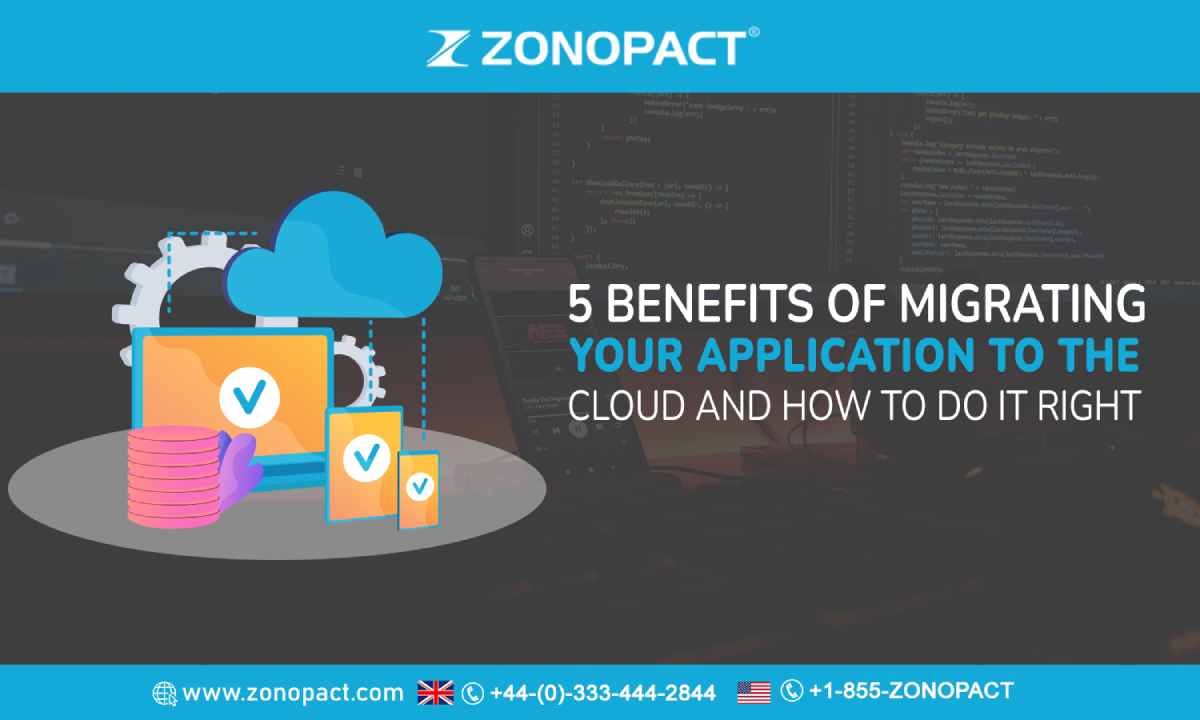
Cloud migration can be a daunting task, but it is a necessary step in order to keep up with the ever-changing landscape of technology. With the right approach and a few key benefits in mind, migrating your application to the cloud can be a smooth and beneficial process. Moving to the cloud offers a range of benefits, from improved scalability, to increased security, to cost savings. Additionally, knowing how to properly migrate your application to the cloud can help ensure that the transition is successful and secure. In this article, we’ll discuss five key benefits of cloud migration and how to do it right. So, let’s dive in and explore the advantages of cloud migration and the best practices for making this transition successfully.
What is Cloud Migration?
Cloud migration is the process of migrating an application from one environment to another. In general, these environments will be either on-premises or hosted in a public cloud. Application migration is a process that can be used for a variety of reasons. These may include upgrading hardware, expanding functionality, and more. Cloud migration is often seen as the process of transitioning an on-premises application to a cloud platform. However, it can also include the process of migrating an application from a private cloud to a public cloud. Cloud migration can also include the shift between different cloud providers. This can include shifting from one public cloud provider to another, or even moving an application between different services within the same public cloud provider.
5 Benefits of Cloud Migration
When deciding whether or not to migrate to the cloud, it’s important to understand the benefits of cloud migration. These benefits can help ensure that the decision to migrate is a sound one. Here are the top five benefits of cloud migration.
Flexibility – The ability to increase or decrease the amount of resources used by your application based on demand is a benefit that comes with many cloud providers. This allows for a more agile approach and can help to avoid over- or under-investing in resources. Cloud scalability and elasticity also allow your application to be more resilient and handle sudden spikes in demand or new users with ease.
Cost effectiveness – Cloud migration can help reduce your operation costs and maintenance requirements. This can be due to a lower up-front cost to get started, the ability to pay for what you use, and the potential to reduce your energy costs.
Better security – Cloud providers have large teams dedicated to security, which can help improve overall application security. This includes increased compliance and regulatory compliance and an increased focus on encryption. Security is a top priority for many cloud providers, and migrating to a cloud platform can help ensure your application is more secure.
Scalability – As discussed above, an advantage of cloud migration is the ability to scale your application quickly and efficiently. This can help avoid bottlenecks and outages when demand increases.
How to Migrate Your Application to the Cloud
Migrating your application to the cloud isn’t as straightforward as it might seem. It’s important to take a measured approach that is tailored to your specific needs. This will help ensure that the transition is successful and all of your critical data is not lost or compromised during the migration process. Here are a few steps to follow when migrating your application to the cloud.
Planning the migration – First, you’ll need to decide which cloud provider to use and what type of service to migrate to. You’ll also need to identify the right data and system migration approach. You’ll want to choose an appropriate migration timing, account for any potential downtime, and decide if any data should be kept on-premises. Selecting a cloud provider – Once you’ve decided which application to migrate, you’ll want to select the right cloud provider and the appropriate service for your needs. While this may seem like a simple task, it can become complicated quickly. There are a number of factors to consider when selecting a cloud provider and service, including cost, data security, scalability, and availability. Transportation and protection of data
Once you’ve selected a service, you’ll need to consider how to transport and protect your data as you migrate it. This can include leveraging a hybrid approach that involves both on-premises and cloud-based data storage.
Best Practices for Cloud Migration
Migrating to the cloud isn’t always an easy process. It can be tricky to ensure that the migration is done correctly and that your data is protected throughout the process. It’s also important to choose the right cloud provider and service to ensure that you get the most out of the migration. Here are some key best practices for cloud migration.
Select the right service – When selecting a service, it’s important to choose one that meets your specific needs. You’ll want to consider a variety of factors, including data security, scalability, and cost.
Transport and protect your data – As mentioned earlier, you may want to select a hybrid approach that involves both on-premises and cloud-based data storage. This can help reduce the risk of losing data and ensure the migration is successful.
Communicate with your team – It’s important to keep your team informed during the migration process. This will help ensure that there are no misunderstandings and that everyone is prepared for the change.
Conclusion
Cloud migration can be a risky process, which is why it’s important to start with the right planning. Fortunately, cloud migration offers many benefits, including improved scalability, increased security, and cost savings. With the right approach, migrating your application to the cloud can be a smooth and beneficial process.